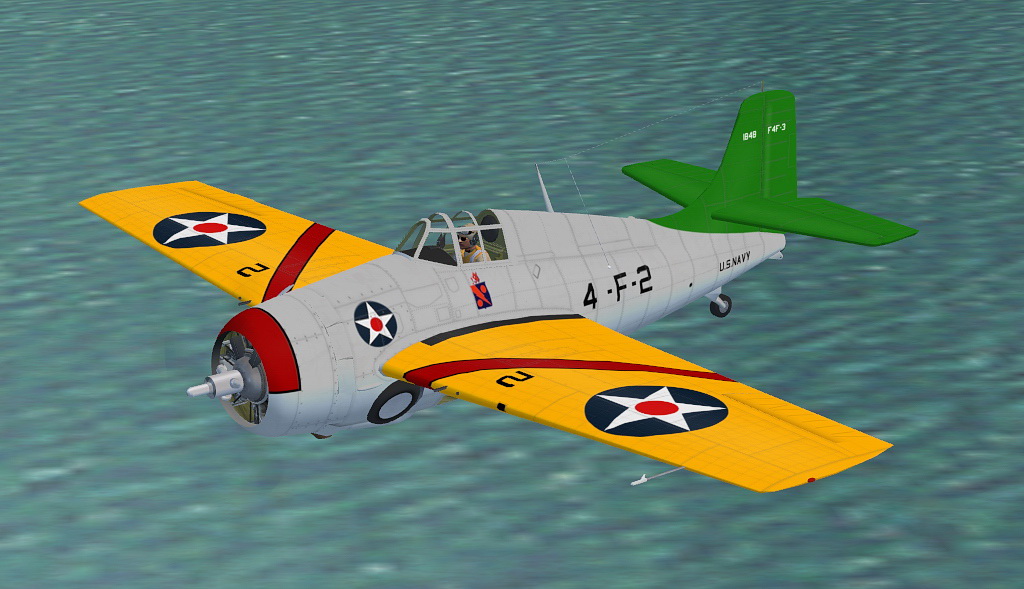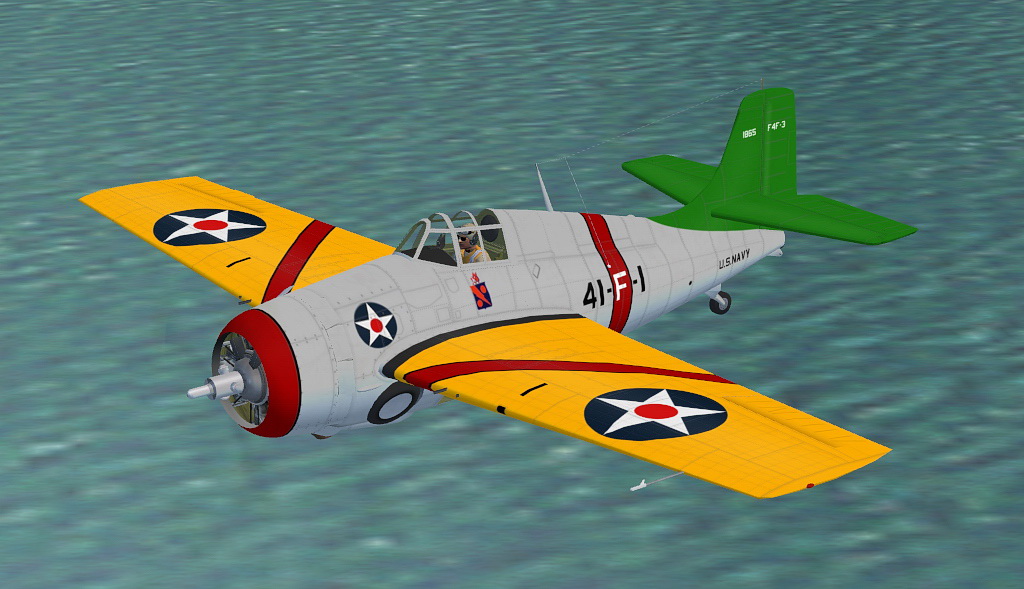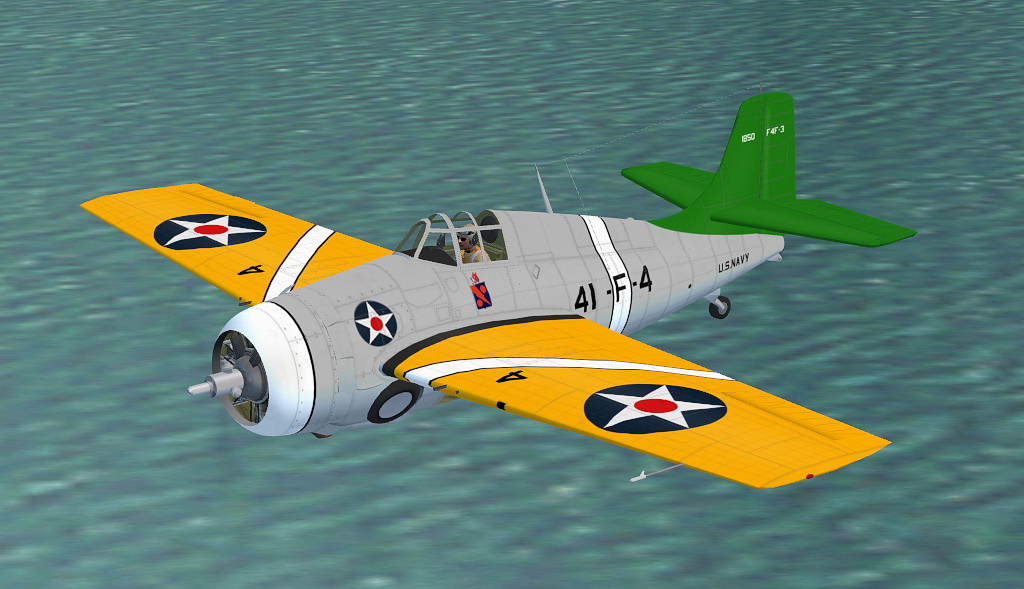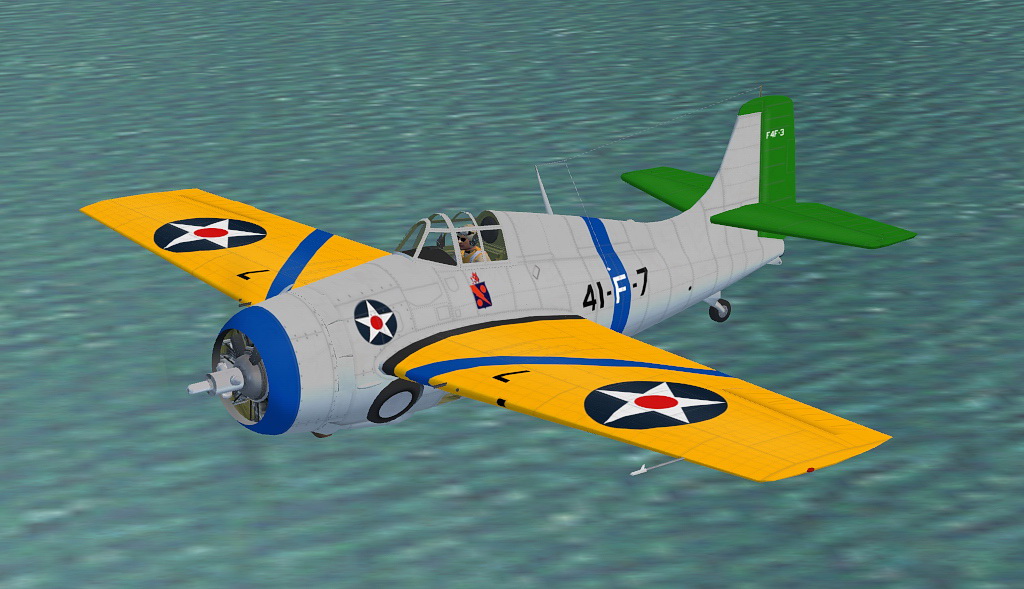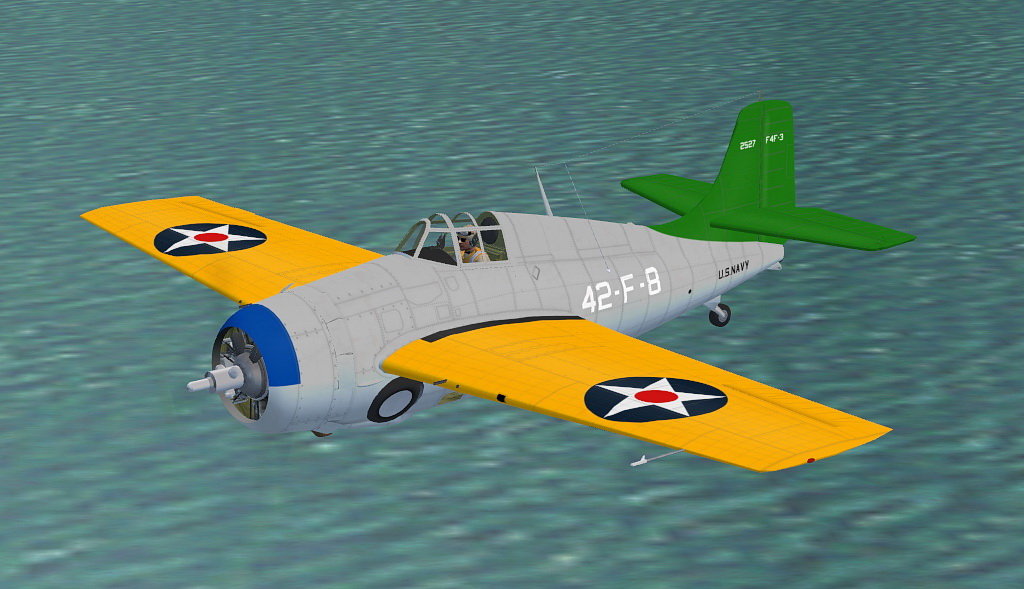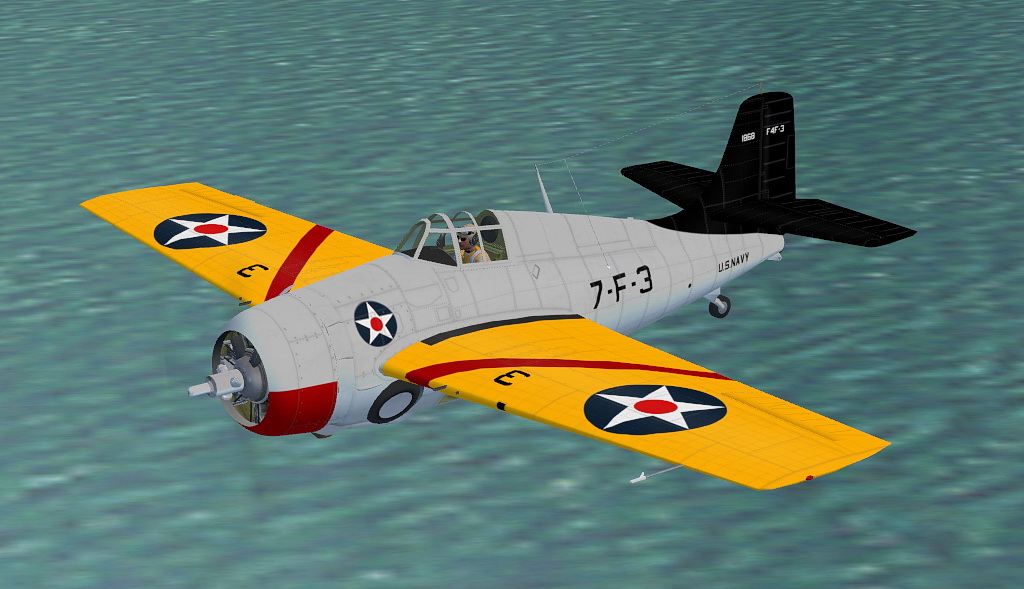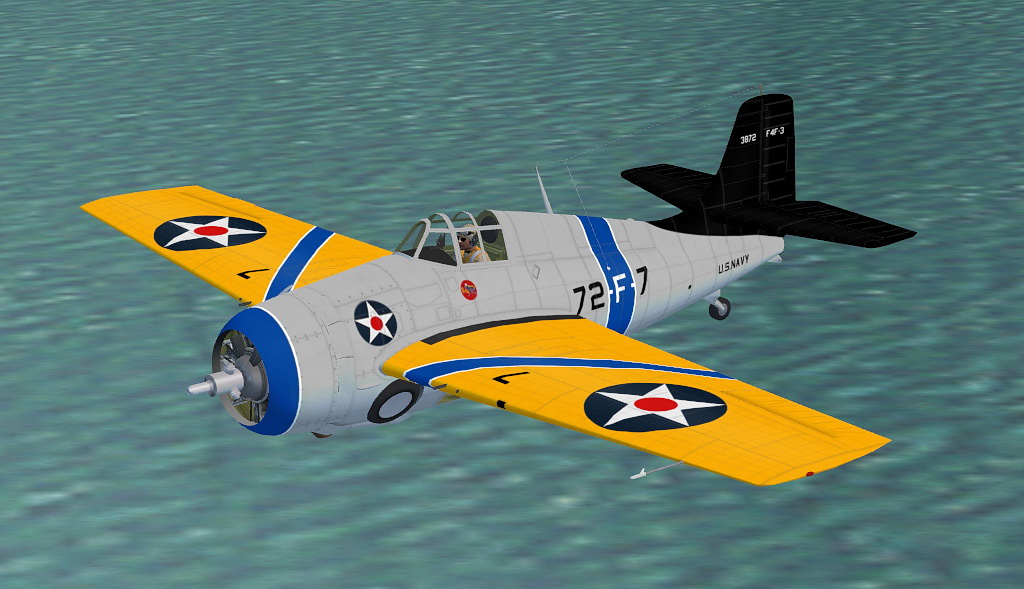Grumman F4F-3 Wildcat VF-2

A new entry has been added to Add-Ons Library, category CFS 2 Aircraft - American
Description: Grumman F4F-3 Wildcat VF-2 USS Lexington (CV2) Lt. Albert O. Vorse Coral Sea May 1942
The original Grumman F4F-1 design was a biplane, which proved inferior to rival designs, necessitating a complete redesign as a monoplane, the F4F-2. This design was still not competitive with the Brewster F2A Buffalo which won initial U.S. Navy orders. Grumman completely rebuilt the prototype as the XF4F-3 with new non-folding wings and tail and a supercharged version of the Pratt & Whitney R-1830 "Twin Wasp" radial engine.Testing of the new XF4F-3 led to an order for F4F-3 production models, the first of which was completed in February 1940. The U.S. Navy officially adopted the aircraft type as the Wildcat. Armed with four .50 in (12.7 mm) Browning machine guns, it joined active units in 1940. At the time of Pearl Harbor, only Enterprise had a fully equipped Wildcat squadron, VF-6. By the end of February, 1942 the US Navy had replaced its Brewster F2A's with the F3F-3 and F3F-3A Wildcats.
The fixed wing F4F-3 Wildcat was generally outperformed by its major opponent the Mitsubishi Zero, but it was more successful in combat partly because, with relatively heavy armor and self-sealing fuel tanks, the Grumman airframe could survive far more damage. In the hands of an expert pilot with a tactical advantage, the Wildcat could prove a difficult opponent even against the formidable Zero. USN Commander "Jimmy" Thach devised a very effective defensive tactic that allowed Wildcat formations to act in a coordinated crossover maneuver to counter a diving attack, called the "Thach Weave".
Credits
Captain Kurt: Aircraft model, drop tank, bomb rack, bomb, VC, paint textures, aircraft flight files, and .dp
Shessi: Pilot figure
Morton: 2D F4F instrument panel modified to an F4F-3 version
Kelticheart: Prop blurred texture
Microsoft: Gauges and .air file
To check it out, rate it or add comments, visit Grumman F4F-3 Wildcat VF-2
The comments you make there will appear in the posts below.

A new entry has been added to Add-Ons Library, category CFS 2 Aircraft - American
Description: Grumman F4F-3 Wildcat VF-2 USS Lexington (CV2) Lt. Albert O. Vorse Coral Sea May 1942
The original Grumman F4F-1 design was a biplane, which proved inferior to rival designs, necessitating a complete redesign as a monoplane, the F4F-2. This design was still not competitive with the Brewster F2A Buffalo which won initial U.S. Navy orders. Grumman completely rebuilt the prototype as the XF4F-3 with new non-folding wings and tail and a supercharged version of the Pratt & Whitney R-1830 "Twin Wasp" radial engine.Testing of the new XF4F-3 led to an order for F4F-3 production models, the first of which was completed in February 1940. The U.S. Navy officially adopted the aircraft type as the Wildcat. Armed with four .50 in (12.7 mm) Browning machine guns, it joined active units in 1940. At the time of Pearl Harbor, only Enterprise had a fully equipped Wildcat squadron, VF-6. By the end of February, 1942 the US Navy had replaced its Brewster F2A's with the F3F-3 and F3F-3A Wildcats.
The fixed wing F4F-3 Wildcat was generally outperformed by its major opponent the Mitsubishi Zero, but it was more successful in combat partly because, with relatively heavy armor and self-sealing fuel tanks, the Grumman airframe could survive far more damage. In the hands of an expert pilot with a tactical advantage, the Wildcat could prove a difficult opponent even against the formidable Zero. USN Commander "Jimmy" Thach devised a very effective defensive tactic that allowed Wildcat formations to act in a coordinated crossover maneuver to counter a diving attack, called the "Thach Weave".
Credits
Captain Kurt: Aircraft model, drop tank, bomb rack, bomb, VC, paint textures, aircraft flight files, and .dp
Shessi: Pilot figure
Morton: 2D F4F instrument panel modified to an F4F-3 version
Kelticheart: Prop blurred texture
Microsoft: Gauges and .air file
To check it out, rate it or add comments, visit Grumman F4F-3 Wildcat VF-2
The comments you make there will appear in the posts below.





 but right on time for "Saratoga..."
but right on time for "Saratoga..." 

